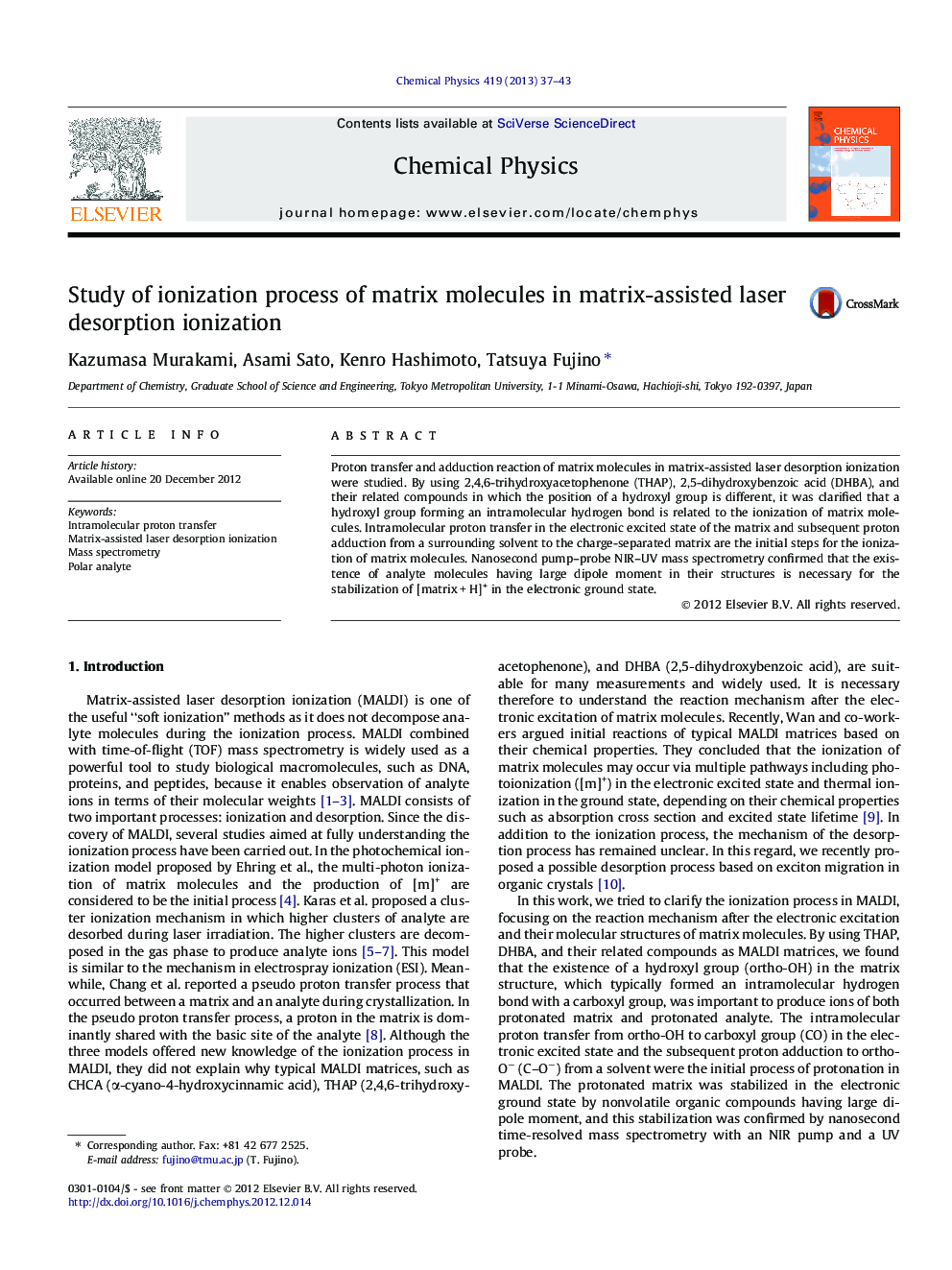| Article ID | Journal | Published Year | Pages | File Type |
|---|---|---|---|---|
| 5373958 | Chemical Physics | 2013 | 7 Pages |
Proton transfer and adduction reaction of matrix molecules in matrix-assisted laser desorption ionization were studied. By using 2,4,6-trihydroxyacetophenone (THAP), 2,5-dihydroxybenzoic acid (DHBA), and their related compounds in which the position of a hydroxyl group is different, it was clarified that a hydroxyl group forming an intramolecular hydrogen bond is related to the ionization of matrix molecules. Intramolecular proton transfer in the electronic excited state of the matrix and subsequent proton adduction from a surrounding solvent to the charge-separated matrix are the initial steps for the ionization of matrix molecules. Nanosecond pump-probe NIR-UV mass spectrometry confirmed that the existence of analyte molecules having large dipole moment in their structures is necessary for the stabilization of [matrix + H]+ in the electronic ground state.
Graphical abstractDownload full-size imageHighlights⺠Proton transfer and adduction reaction of matrix in MALDI were studied. ⺠Hydroxyl group forming intramolecular hydrogen bond was related to the ionization. ⺠Intramolecular proton transfer in the electronic excited state was the initial step. ⺠Non-volatile analytes stabilized protonated matrix in the ground state. ⺠A possible mechanism, “analyte support mechanism”, has been proposed.
